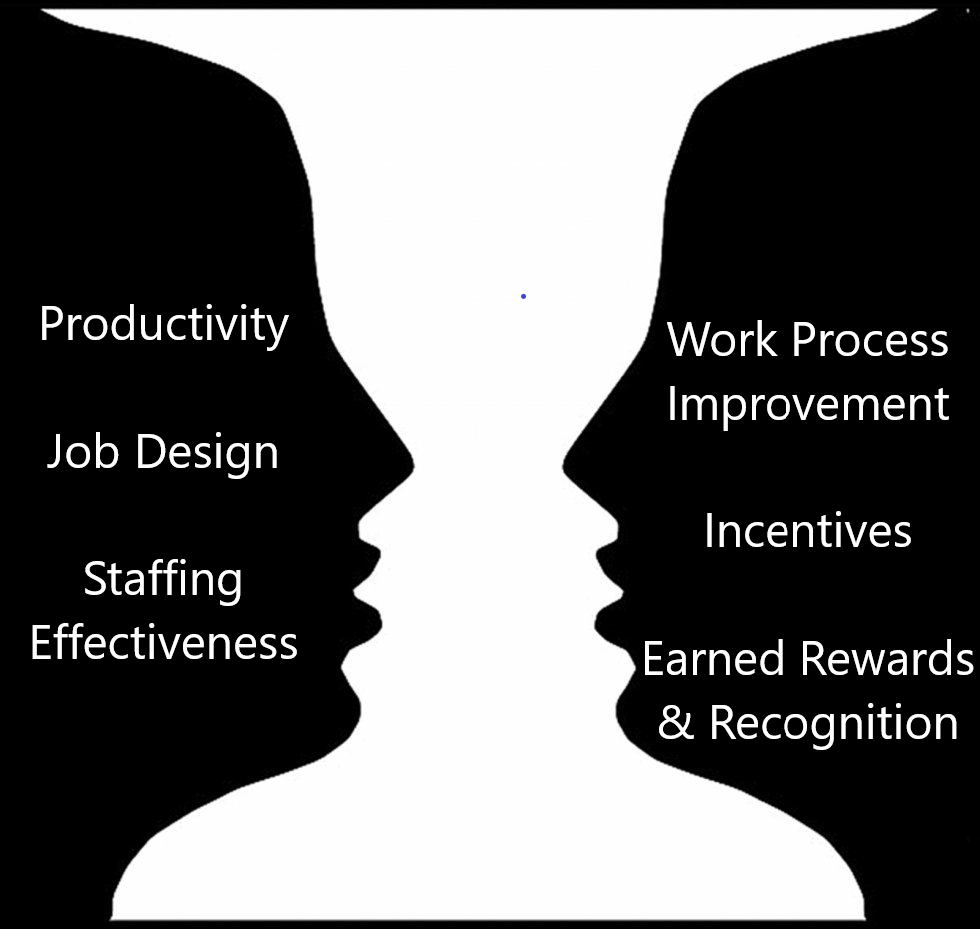With newly acquired for-profit status at my hospital , I have already described my first visit to the adjustment center! During that visit, I was challenged to move HR from cheer-leading to being the in-house experts in the management and utilization of human resources.
I thought that we were on top of the management part. We did a lot of supervisory training and skills development for management staff. Most of it related to the basic management skills and functions such as managing staff, scheduling, interpersonal conflict, communication, performance management, appraisals, motivation, etc.
My second stay in the adjustment center involved focusing on developing expertise in the utilization of human resources. Our department’s focus had been on the employees –getting them on board and keeping them happy! How much time had we spent on what we were asking them to do? Next to none!
This visit to the adjustment center resulted in a change in my perception of the HR department and which of its activities really added value. The best way to explain my “aha” moment is to take a look at Rubin’s Vase.

We are all familiar with this figure. When you see the vase, it is said to be in the foreground with the faces in the background. When the faces are apparent then they are in the foreground with the vase in the background .
This is how most of us view HR:

I have listed 5 functions of HR but you could have more. Most HR professionals list 5-7 with some including labor law compliance and record keeping. If you enter “HR functions” into your search engine, most results will be somewhat similar. A few sites have a list that is more strategic in design, but this is how most of the profession views HR.
Switching Places
The CEO’s challenge to me to be the expert in the management and utilization of human resources led me to some areas that were not typically considered a normal part of HR. These were areas that HR should be either managing or a knowledge resource. Yet, these functions were those that had been in the background to this point.
This is how we could view HR if we bring the faces to the foreground:

Our focus in HR has generally been on providing people to do the work and then keeping them happy after we get them. I had never been expected to be the expert in people utilization. This includes what the employees are being asked to do, how many are needed to do it, how both are measured and rewarded.
All of these functions involve people and yet HR has left them to others to manage. My position is that the CHRO role should be as strong as the CFO role–one involving finances and the other involving people. A strong CHRO role does not mean that s/he has direct line control of every issue related to how employees are utilized any more than the CFO processes every bill or makes every purchase.
Productivity management offers the biggest “win”
What it means is that HR understands productivity and manages systems to monitor and improve it. (Another post will address why productivity management belongs in HR). It means that HR is interested not only in the individual doing the work but the worthwhileness of the work itself. HR becomes the in-house expert in improving work processes, linking pay and rewards directly to achievement, and developing and reinforcing a culture of high performance.
Another long post, but it sets the stage for a lot of discussion. Two final points:
- You may think that much of this should not be HR’s responsibility. Okay–then if HR is not going to own it in your organization, then who should? Your managers have generally been promoted for their clinical skills or expertise in the department. They should be the experts in how to maximize the “people” factor? Leave it to the CFO? No wonder that person is so powerful. No wonder that the CHRO position so rarely is part of the path to the corner office!
- The biggest payoff in terms of measurable value will come in the areas of productivity and work improvement. An HR department actively managing these will be able to directly and positively impact the bottom line. A CHRO knowledgeable on how to measure and impact these factors will have incredible value to the organization.
I look forward to energetic discussions. Future posts on this subject will have a lot of how-to information. If HR is truly a profession with very real measurable value, we ought to be able to manage these functions better than anyone else in the organization.





